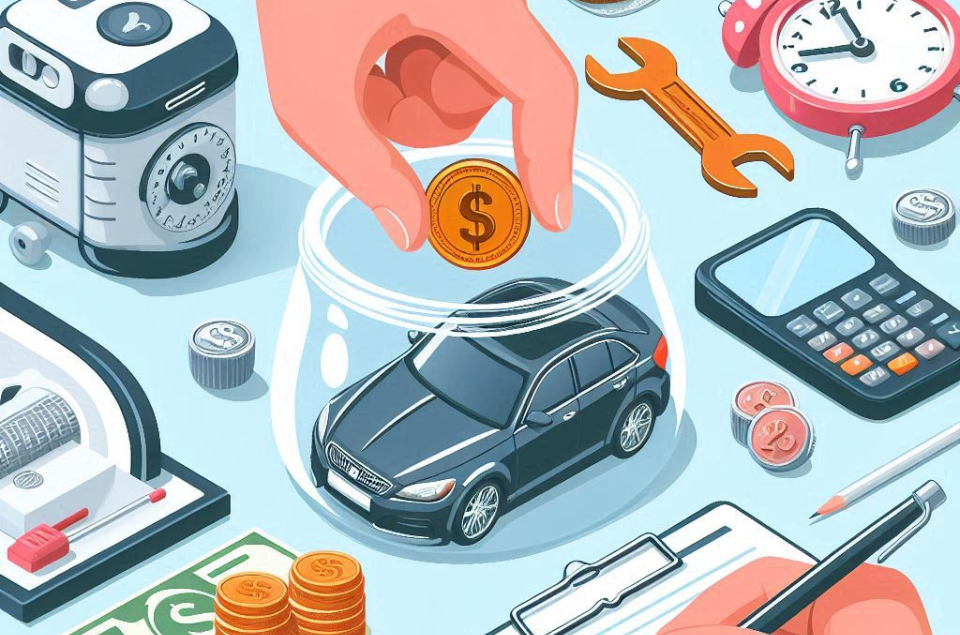
Tips for Saving Money for a Car: Your Ultimate Guide
Buying a car is an exciting adventure, but it can also cost a lot of money. Whether you want a shiny new car or a good used one, saving money the right way is very important. In this blog, we’ll share helpful tips for saving money for a car that will help you reach your goal without spending too much. Let’s get started!
1. Set a Realistic Budget
Before you start saving, determine how much you can afford to spend on a car. A good rule of thumb is to spend no more than half your annual income on the car’s total cost, including taxes and insurance. For example, if you earn ₹10 lakh per year, aim to budget around ₹5 lakh for your car purchase.
2. Create a Savings Plan
Once you have your budget, create a savings plan. Decide how much money you need for a down payment and set a timeline to reach that goal. Here’s how:
- Monthly Savings: Divide your total savings goal by the number of months until you plan to buy the car. This will tell you how much to save each month.
- Automate Your Savings: Set up an automatic transfer from your checking account to your savings account each month. This makes saving easier and ensures you stick to your plan.
3. Cut Unnecessary Expenses
To save more money, look at your current spending and see where you can cut back:
- Dining Out: Reduce how often you eat out or choose cheaper options.
- Subscriptions: Cancel any unused subscriptions or memberships.
- Shopping: Limit impulse buying and focus on essential purchases.
Every little bit adds up, and these savings can go directly toward your car fund!
4. Consider a Used Car
If saving for a new car seems tough, consider buying a used one instead. Used cars can be 30-40% cheaper than new ones and still offer great value. Just make sure to check the vehicle’s condition and maintenance history before buying.
5. Research Financing Options
If you plan to take out a loan for your car, research different financing options:
- Pre-Approved Loans: Getting pre-approved can give you an idea of how much you can borrow and at what interest rate.
- Compare Rates: Shop around for the best interest rates from banks and credit unions.
A lower interest rate means lower monthly payments!
6. Factor in Additional Costs
Remember that owning a car comes with ongoing costs beyond the purchase price. Consider these expenses when budgeting:
- Insurance: Get quotes from multiple providers to find the best deal.
- Fuel Costs: Choose a fuel-efficient vehicle to save money on gas.
- Maintenance: Set aside money for regular maintenance like oil changes and tire rotations.
7. Take Advantage of Discounts
Look for discounts or offers when buying your car:
- Seasonal Sales: Many dealerships offer discounts during festive seasons or at the end of the year.
- Trade-In Value: If you have an old vehicle, consider trading it in to reduce the cost of your new car.
8. Build an Emergency Fund
While saving for your car, also work on building an emergency fund. This fund will help cover unexpected expenses related to your new vehicle without affecting your budget.
Conclusion
Saving money for a car doesn’t have to be hard. Here are some tips for saving money for a car:
- Set a Budget: Decide how much you can spend.
- Create a Savings Plan: Plan how much to save each month.
- Cut Unnecessary Expenses: Spend less on things you don’t need.
- Consider Used Cars: They are usually cheaper than new ones.
- Research Loan Options: Find the best loan deals.
- Think About Extra Costs: Remember to budget for insurance and gas.
- Look for Discounts: Check for sales or offers when buying.
- Build an Emergency Fund: Save some money for unexpected costs.
By following these steps, you can make your dream of owning a car come true!
